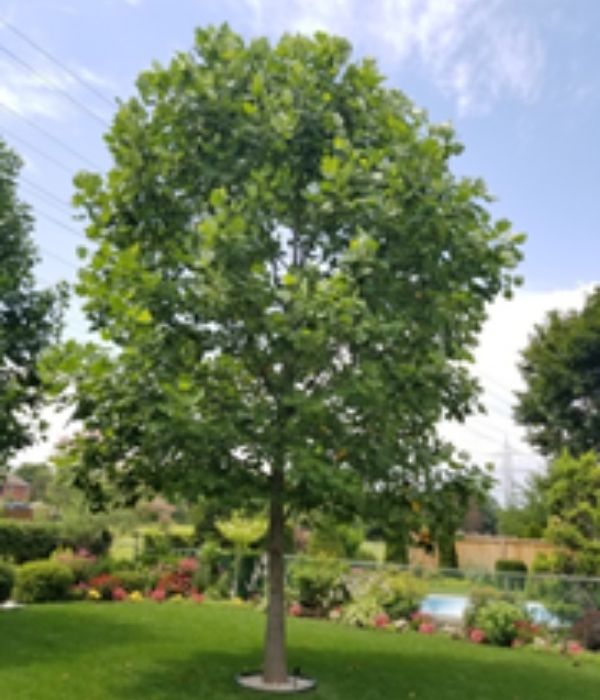Lake Ontario, the largest body of water in the GTA, is home to a wide range of native aquatic species and provides drinking water to approximately nine million people throughout the province of Ontario and the state of New York. Human activities, such as land development and its associated pollution, have made Lake Ontario vulnerable to an increase in stormwater runoff, some of which may be contaminated. As a result, we are seeing habitat destruction, loss of biodiversity, accelerated erosion and reduced nearshore water quality.

So, what can we do to help mitigate this issue? Developing living green infrastructure (natural vegetative systems and green technologies) can significantly help to reduce stormwater runoff in urban areas over time. Examples of green infrastructure include green roofs and walls, stormwater ponds, wetlands and ravines, rain gardens, parklands and - of course - trees.
Planting trees in an urban area can reduce stormwater runoff and its associated pollution in many ways:
- Tree branches and leaves intercept, absorb and filter rainwater, which reduces soil erosion and flooding
- Fallen tree leaves act as an additional absorption layer on the ground, helping to filter rainwater, while also depositing nutrients back into the soil over time
- Tree leaves and roots absorb air and water pollutants, reducing the amounts found in stormwater that reaches our waterways
- Tree roots increase soil porosity and permeability and absorb water in large quantities, which reduces rainwater runoff and in turn, flooding
As a result of these benefits, planting a single tree in an urban area has the potential to reduce stormwater runoff by up to 720 litres!

While planting trees can be a fun and easy way to help to reduce stormwater runoff, it is important they are properly planted and cared for to maximize the benefits. For a tree to successfully manage runoff, it must be planted in a location with ample soil volume, allowing it to grow to its mature height - remember, the larger the tree, the more stormwater runoff absorbed. Regular watering and mulching will also encourage healthy growth. That said, it is important to note there is a difference between how public and private property trees help to manage urban stormwater.
City-owned street trees play an important role in breaking up concrete landscapes and managing stormwater runoff in highly urbanized areas. Unfortunately, the growth of these street trees, tends to be limited by available planting and root space, care, and urban stresses, such as highly compacted soil.

While it is important to work toward improving urban conditions for street trees, this also highlights the importance of planting trees on private property, where there is more available space, better soil quality and homeowners to regularly and properly care for the trees long after they are planted, eventually leading to an increase in benefits. By planting trees on private property in the GTA, homeowners are not only contributing to improved stormwater management, but also helping to protect and manage water quality in Lake Ontario for years to come!
Interested in having LEAF help you plant native trees and shrubs in your yard? Check out our subsidized Backyard Tree Planting Program and apply today!
Adriana Rezai-Stevens was the Planting and Stewardship Coordinator at LEAF.
LEAF offers a subsidized Backyard Tree Planting Program for private property. The program is supported by the City of Toronto, the Regional Municipality of York, the City of Markham, the Town of Newmarket, the Regional Municipality of Durham, the Town of Ajax, the Township of Scugog, the City of Pickering, the City of Oshawa, the Town of Whitby, Ontario Power Generation, Ontario Trillium Foundation and GrandTrees/Canadian Trees For Life.
